DWX 2021
Martin Grotz - martin.grotz@mathema.de - @mobilgroma
MATHEMA GmbH
DRY in Angular Templates
Content Projection im Praxiseinsatz
Martin Grotz
Angular

- Open-source Framework
- Webtechnologien & TypeScript
- Multi-target: WebApps, MobileApps, SSR
- Komponentenorientiert
- Dependency Injection
- Automatische Change Detection
Angular Bausteine
@Directive({selector: '[bold]'})
export class SomeDirective {
bold: boolean = false;
}
@Injectable()
export class SimpleService {
public shouldBeBold = true;
}
@Component(
{
selector: 'app-my-component',
template: `
<h1>My Component</h1>
<p>This text can be bold (or not)?</p>
`
}
)
export class MyComponent {}
Dependency Injection & Input
@Directive({selector: '[bold]'})
export class SomeDirective {
@HostBinding('class.bold')
@Input()
bold: boolean = false;
}
@Injectable()
export class SimpleService {
public shouldBeBold = true;
}
@Component(
{
selector: 'app-my-component',
providers: [SimpleService],
template: `
<style>.bold { font-weight: bold}</style>
<h1>My Component</h1>
<p [bold]="simpleService.shouldBeBold">This text can be bold (or not)?</p>`
}
)
export class MyComponent {
constructor(public readonly simpleService: SimpleService) {}
}Change Detection - Default
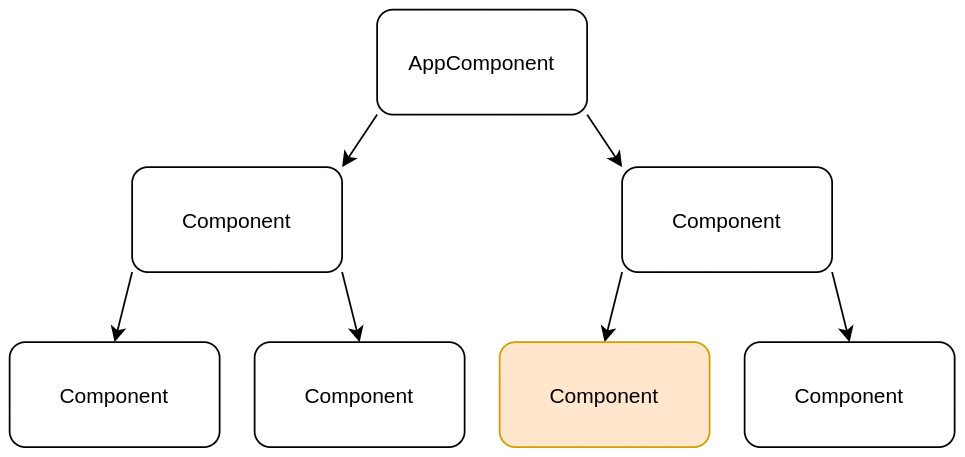
Change Detection - OnPush
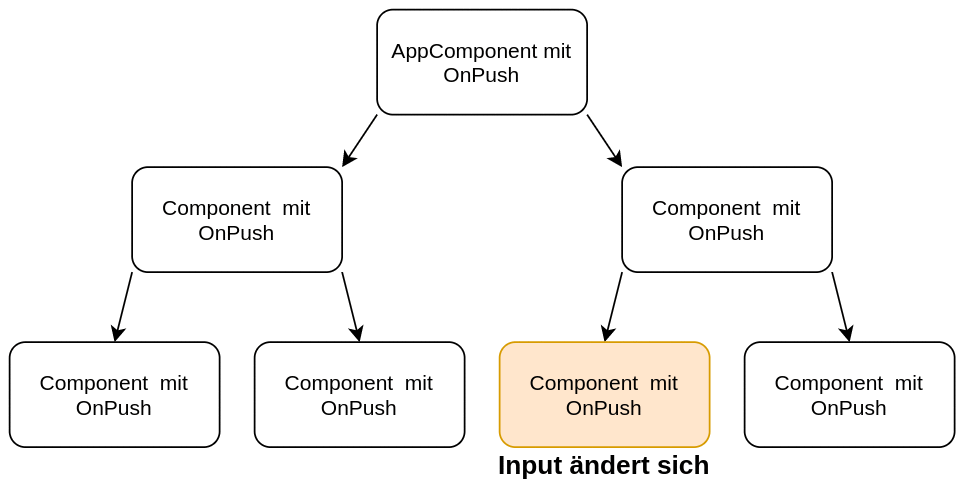
ng-content
@Component(
{
selector: 'outer-component',
template: `
<h1>...</h1>
<fancy-modal>
<p>
Lorem ipsum dolor sit amet.
Duis a ornare massa.
</p>
</fancy-modal>
`
}
)
export class OuterComponent {/* ... */}
@Component(
{
selector: 'fancy-modal',
template: `
<header>...</header>
<ng-content>
</ng-content>
<footer>...</footer>
`
}
)
export class FancyModal {/* ... */}
ng-content Selektoren (Beispiele)
@Component(
{
/* ... */
template: `
<ng-content select="p"></ng-content>
<ng-content select=".my-class"></ng-content>
<ng-content select="[attr]"></ng-content>
<ng-content></ng-content>
`
}
)
export class WithSelectors {/* ... */}
Angular Lifecycle Hooks
| Hook | Was passiert |
|---|---|
| ngOnInit | Inputs initialisiert, Komponente initialisieren |
| ngAfterContentInit | Externer Content wurde projiziert und initialisiert |
| ngAfterViewInit | Eigenes Template und Kindkomponenten initialisiert |
| ngOnDestroy | Komponente wird gleich abgebaut |
Lifecycle Reihenfolge
@Component(
{
selector: 'outer',
template: `
<middle>
<inner></inner>
</middle>
`
}
)
export class OuterComponent {/* ... */}
@Component(
{
selector: 'middle',
template: `<ng-content></ng-content>`
}
)
export class MiddleComponent {/* ... */}
@Component(
{
selector: 'inner',
template: `<p>...</p>`
}
)
export class InnerComponent {/* ... */}
| ngOnInit | Inputs setzen, Komponente initialisieren |
| ngAfterContentInit | ng-content initialisiert |
| ngAfterViewInit | Restliche (Kind-)Elemente initialisiert |
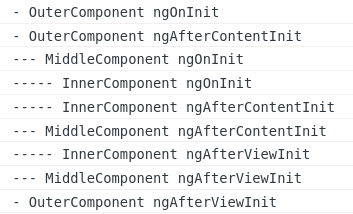
ContentChildren
@ContentChild(TagDirective) tagDirective: TagDirective;
@ContentChildren(TagDirective) tagDirectives: QueryList<TagDirective>;
Use to get the QueryList of elements or directives from the content DOM. Any time a child element is added, removed, or moved, the query list will be updated, and the changes observable of the query list will emit a new value.
Content queries are set before the ngAfterContentInit callback is called.
Does not retrieve elements or directives that are in other components' templates, since a component's template is always a black box to its ancestors.
Doku:
https://angular.io/api/core/ContentChild
https://angular.io/api/core/ContentChildren
Projektion über mehrere Ebenen
@Component(
{
selector: 'layer1',
template: `
<layer2>
<div [tag]="'tagged'">Cool content</div>
</layer2>
`
}
)
export class FirstLayerComponent {}
@Component(
{
selector: 'layer2',
template: `
<layer3>
<ng-content></ng-content>
</layer3>`
}
)
export class SecondLayerComponent {
@ContentChild(TagDirective) tagDirective!: TagDirective;
ngAfterContentInit(): void {
console.log('SecondLayerComponent', this.tagDirective);
}
}
@Component(
{
selector: 'layer3',
template: `<ng-content></ng-content>`
}
)
export class ThirdLayerComponent {
@ContentChild(TagDirective) tagDirective!: TagDirective;
ngAfterContentInit(): void {
console.log('ThirdLayerComponent', this.tagDirective);
}
}


2x ng-content mit gleichem Selektor = 💥
@Component(
{
selector: 'outer-layer',
template: `
<inner-layer>
<p>💰💰💰</p>
</inner-layer>
`
}
)
export class OuterLayerComponent {}
@Component(
{
selector: 'inner-layer',
template: `
<div>
<h3>Money</h3>
<ng-content></ng-content>
</div>
<div *ngIf="false">
<h3>More money</h3>
<ng-content></ng-content>
</div>
`
}
)
export class InnerLayerComponent {}

Injector (& Change Detection)
@Component(
{
selector: 'layer-one',
template: `
<layer-two>
<inner-text></inner-text>
</layer-two>`,
}
)
export class LayerOneComponent {}
@Component(
{
selector: 'layer-two',
template: `
<layer-three>
<ng-content></ng-content>
</layer-three>`,
providers: [LayerTwoService]
}
)
export class LayerTwoComponent {}
@Component(
{
selector: 'layer-three',
template: `<ng-content></ng-content>`,
providers: [LayerThreeService]
}
)
export class LayerThreeComponent {}
@Component(
{
selector: 'inner-text',
template: `<p>Are both services injected here?</p>`
}
)
export class InnerTextComponent {
constructor(
@Optional() layerTwoService: LayerTwoService,
@Optional() layerThreeService: LayerThreeService
) {
console.log('injected services', {
layer2Service: layerTwoService,
layer3Service: layerThreeService});
}
}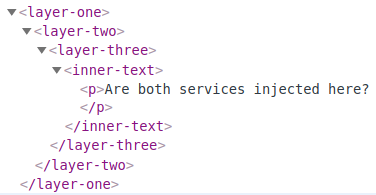

Injector (& Change Detection)
@Component(
{
selector: 'layer-one',
template: `
<layer-two>
<inner-text></inner-text>
</layer-two>`,
}
)
export class LayerOneComponent {}
@Component(
{
selector: 'layer-two',
template: `
<layer-three>
<ng-content></ng-content>
</layer-three>`,
providers: [LayerTwoService]
}
)
export class LayerTwoComponent {}
@Component(
{
selector: 'layer-three',
template: `<ng-content></ng-content>`,
providers: [LayerThreeService]
}
)
export class LayerThreeComponent {}
@Component(
{
selector: 'inner-text',
template: `<p>Are both services injected here?</p>`
}
)
export class InnerTextComponent {
constructor(
@Optional() layerTwoService: LayerTwoService,
@Optional() layerThreeService: LayerThreeService
) {
console.log('injected services', {
layer2Service: layerTwoService,
layer3Service: layerThreeService});
}
}This is working as expected:
nodes are only "projected" (moved to a different location) but everything else works relative to their source (= before projection) location.
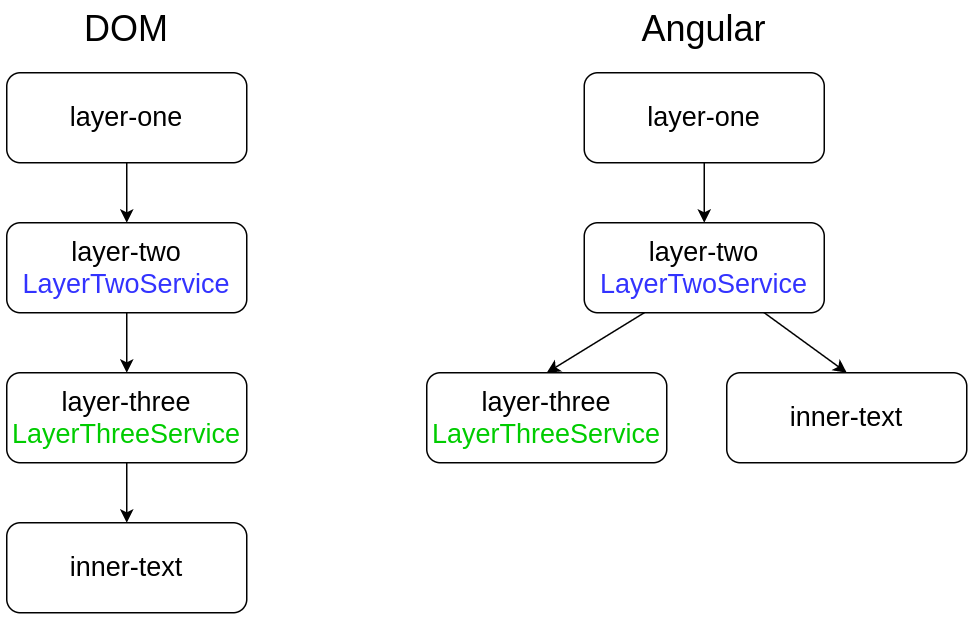
ng-template
*ngIf; else
@Component(
{
template: `
<ng-container *ngIf="!!name; else noNameGiven">
<p>Hallo, {{name}}!</p>
</ng-container>
<ng-template #noNameGiven>
<p>Leider weiß ich deinen Namen noch nicht. Trotzdem: Hallo!</p>
</ng-template>
`
}
)
export class Component { ... }
ngTemplateOutlet
@Component(
{
template: `
<ng-template #listItem let-itemText>
<li>{{itemText}}</li>
</ng-template>
<ul>
<ng-template *ngFor="let item of ['Apple', 'Banana', 'Cookie'];"
[ngTemplateOutlet]="listItem"
[ngTemplateOutletContext]="{$implicit: item}">
</ng-template>
</ul>
`
}
)
export class TemplateOutletComponent {}Mehrere Templates
@Directive({ selector: "ng-template[templateType]" })
export class TemplateTypeDirective {
@Input() templateType: string = "";
constructor(public readonly template: TemplateRef<any>) {}
}
Mehrere Templates
@Component({
selector: "shopping-list",
template: `
<list-with-templates [items]="shoppingListEntries">
<ng-template [templateType]="'fruit'" let-cartEntry>
<li>🍉🍋🍍 {{ cartEntry.name }}</li>
</ng-template>
<ng-template [templateType]="'sweets'" let-cartEntry>
<li>🍩🍪🍬 {{ cartEntry.name }}</li>
</ng-template>
</list-with-templates>
`
})
export class ShoppingListComponent {
shoppingListEntries = [
{ name: "Apple", type: "fruit" },
{ name: "Banana", type: "fruit" },
{ name: "Cookie", type: "sweets" },
{ name: "Pork", type: "meat" },
];
}

Mehrere Templates
@Component({
selector: "list-with-templates",
template: `
<ul>
<ng-template
*ngFor="let item of items"
[ngTemplateOutlet]="templates.get(item.type) || null"
[ngTemplateOutletContext]="{ $implicit: item }"
>
</ng-template>
</ul>
`,
})
export class ListWithTemplatesComponent {
@Input() items: any[] = [];
@ContentChildren(TemplateTypeDirective) templateTypes!: QueryList<TemplateTypeDirective>;
templates = new Map<string, TemplateRef<any>>();
ngAfterContentInit(): void {
this.templateTypes.forEach((templateTypeDirective: TemplateTypeDirective) => {
this.templates.set(templateTypeDirective.templateType, templateTypeDirective.template);
}
);
}
}
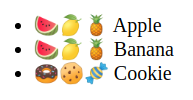
Injector Tree
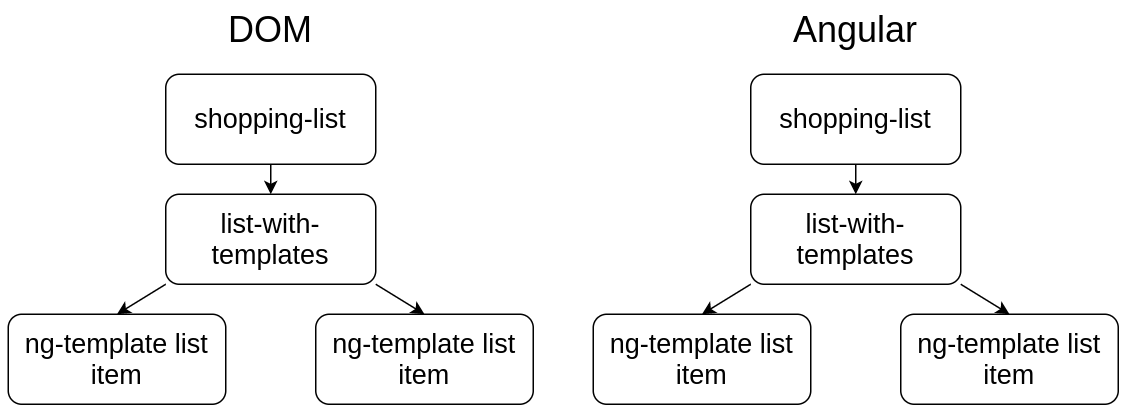
Performance
Performance: trackBy
@Component({
selector: "shopping-list",
template: `
<list-with-templates-trackBy
[items]="shoppingListEntries">
...
</list-with-templates-trackBy>
`
})
export class ShoppingListWithTrackByComponent {
constructor(changeDetectorRef: ChangeDetectorRef) {
timer(2_000, 2_000)
.subscribe(() => {
this.shoppingListEntries = this.shoppingListEntries
.map(x => Object.assign({}, x));
changeDetectorRef.markForCheck();
});
}
}
@Component({
selector: "list-with-templates-trackBy",
template: `
<ul>
<ng-template
*ngFor="let item of items; trackBy: trackByFn"
[ngTemplateOutlet]="templates.get(item.type) || null"
[ngTemplateOutletContext]="{ $implicit: item }"
>
</ng-template>
</ul>
`,
})
export class ListWithTemplatesTrackByComponent {
@Input() trackByFn: (index: number, item: any) => any = (_, item) => item;
...

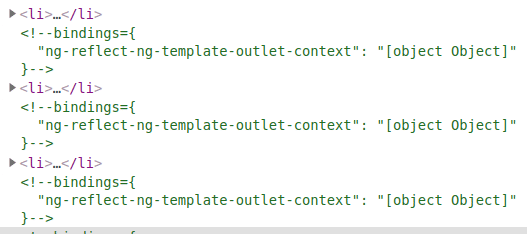
Performance: trackBy
@Component({
selector: "shopping-list",
template: `
<list-with-templates-trackBy
[trackByFn]="trackByName"
[items]="shoppingListEntries">
...
</list-with-templates-trackBy>
`
})
export class ShoppingListWithTrackByComponent {
trackByName = (_index: number, item: any) => item.name;
constructor(changeDetectorRef: ChangeDetectorRef) {
timer(2_000, 2_000)
.subscribe(() => {
this.shoppingListEntries = this.shoppingListEntries
.map(x => Object.assign({}, x));
changeDetectorRef.markForCheck();
});
}
}
@Component({
selector: "list-with-templates-trackBy",
template: `
<ul>
<ng-template
*ngFor="let item of items; trackBy: trackByFn"
[ngTemplateOutlet]="templates.get(item.type) || null"
[ngTemplateOutletContext]="{ $implicit: item }"
>
</ng-template>
</ul>
`,
})
export class ListWithTemplatesTrackByComponent {
@Input() trackByFn;

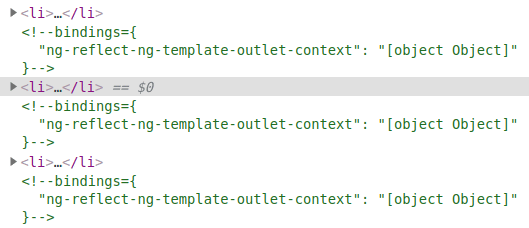
Performance Analyse
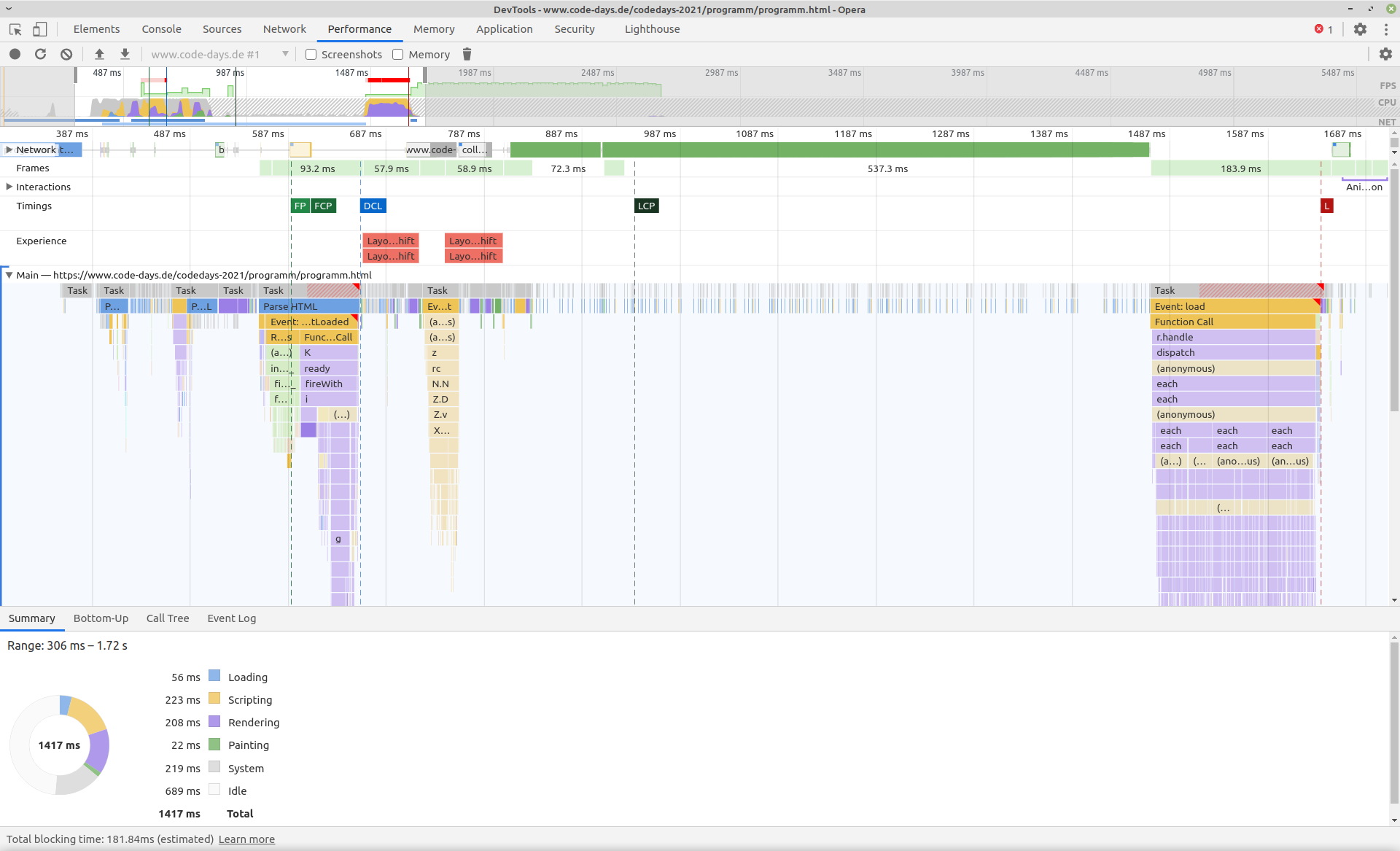
Performance Analyse
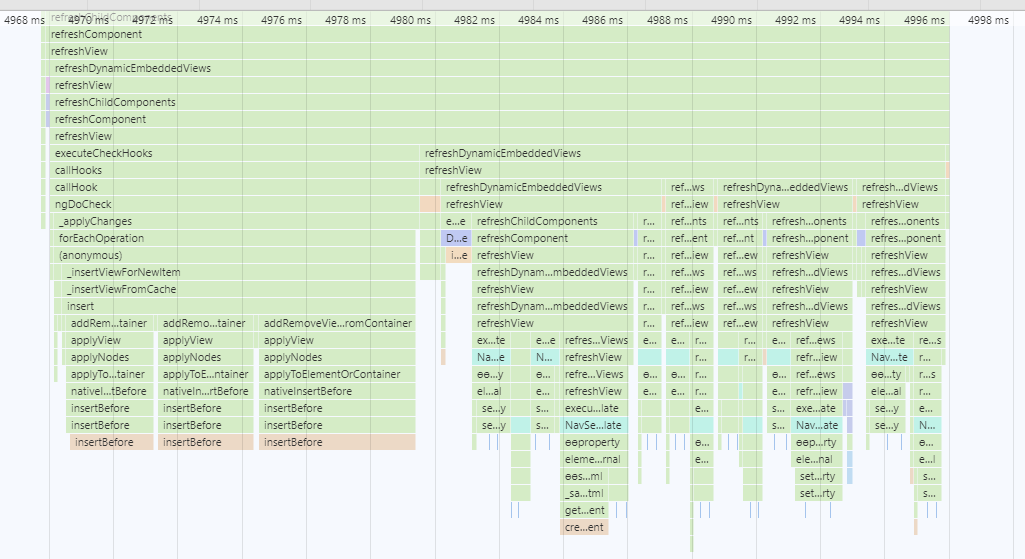
RxAngular

RxAngular Homepage
Doku-Links
Danke

| martin.grotz@mathema.de | |
| @mobilgroma | |
| github | groma84 |
| Slides | https://groma84.github.io/angular-content-projection-vortrag/
 |
